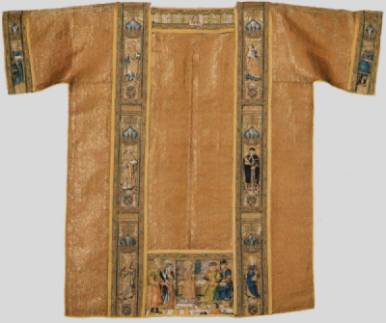
Dalmatic with coat of arms of bishop Aymon de Montfalcon, around 1500, flemish
Berne, Historical Museum Inv. 40
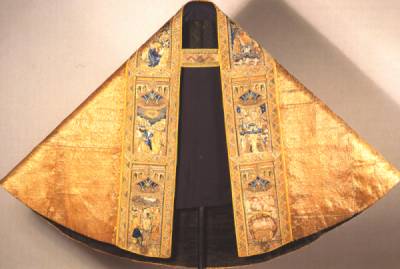
Cope with coat of arms of bishop Aymon de Montfalcon, around 1500, flemish
Berne, Historical Museum Inv. 307
| ANNE WANNER'S Textiles in History / book reviews |
| Iconoclasm -
Madness or the Will of God? Exhibition in the Berne Historical Museum 2nd November 2000 to 16th April 2001 exhibition
catalogue press release: A.W: The autor describes a
cope, a chasuable, 2 dalmatics and 7 fragments of a cope.
The vestments (Inv. 307) were commissioned by bishop
Aymon de Montfalcon (reigned 1491-1517) of the cathedral
of Lausanne. In the inventary made in 1536 when the
bernese confiscated the church treasure, 2 copes, a
casuable, 2 dalmatics are enumerated. The fabric was
woven in Florence, the embroideries are flemish. |
 Dalmatic with coat of arms of bishop Aymon de Montfalcon, around 1500, flemish Berne, Historical Museum Inv. 40 |
 Cope with coat of arms of bishop Aymon de Montfalcon, around 1500, flemish Berne, Historical Museum Inv. 307 |
| 2
Details of the Cope: -
the triumphant Church |
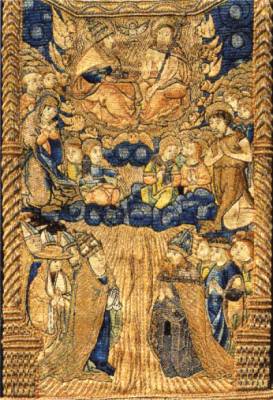 |
|
- Chasuable with coat of arms of bishop
Aymon de Montfalcon, around 1500, flemish - Detail with Scene of the life of Mary: immaculate conception |
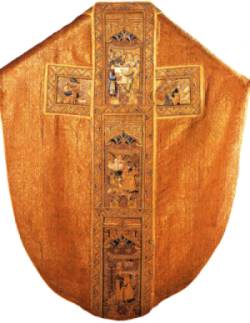 |
|
7 Fragments of Cope Coat of arms
of Jacob of Savoy, count of Romont, |
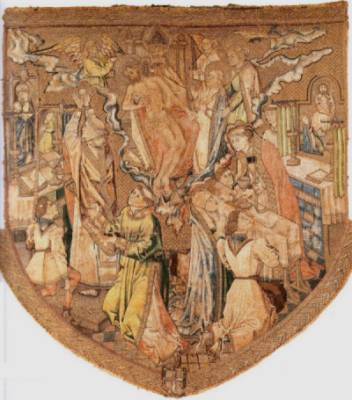 - the sacrifice of the mass - baptism |
|
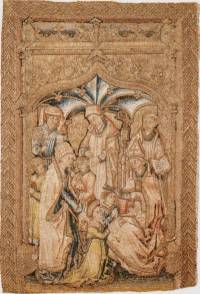 confirmation |
|
death |
| see also -
Newsletter 15, 2001 |
| home content | Last revised January 20, 2001 | For further information contact Anne Wanner wanner@datacomm.ch |